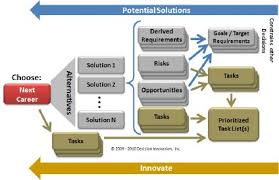The Business Decision-Making Process
Decision-making is a crucial aspect of running a successful business. Every day, business owners and managers are faced with a multitude of decisions that can have a significant impact on the company’s success. Understanding the decision-making process is essential for making informed and effective choices that benefit the organization.
Identify the Problem
The first step in the business decision-making process is to identify the problem or opportunity that requires a decision to be made. This step involves gathering relevant information and data to fully understand the issue at hand.
Gather Information
Once the problem has been identified, the next step is to gather all relevant information that may impact the decision. This includes collecting data, conducting research, and consulting with experts or stakeholders.
Evaluate Options
After gathering information, it’s important to evaluate all possible options for addressing the problem or opportunity. This step involves weighing the pros and cons of each option and considering potential risks and benefits.
Make a Decision
Once all options have been evaluated, it’s time to make a decision. This step involves selecting the best course of action based on the information gathered and analyzed during earlier stages of the process.
Implement the Decision
After a decision has been made, it’s important to implement it effectively. This may involve creating an action plan, assigning responsibilities, and setting timelines for completion.
Evaluate Results
The final step in the business decision-making process is to evaluate the results of the decision that was made. This allows businesses to assess whether their choice was successful and identify any areas for improvement in future decisions.
In conclusion, mastering the business decision-making process is essential for ensuring long-term success and growth. By following these steps and making informed choices, businesses can navigate challenges effectively and capitalize on opportunities for growth and innovation.
5 Essential Tips for Effective Business Decision Making
- Clearly define the decision that needs to be made
- Gather relevant data and information to inform the decision
- Consider potential risks and benefits of each option
- Involve key stakeholders in the decision-making process
- Evaluate the outcomes of the decision and learn from them for future decisions
Clearly define the decision that needs to be made
One crucial tip in the business decision-making process is to clearly define the decision that needs to be made. By clearly outlining the problem or opportunity at hand, business owners and managers can ensure that everyone involved understands the objective and scope of the decision-making process. This clarity helps in gathering relevant information, evaluating options, and ultimately making an informed decision that aligns with the organization’s goals and objectives. A well-defined decision also sets a clear direction for implementation and evaluation, leading to more effective outcomes and successful results in the long run.
Gather relevant data and information to inform the decision
Gathering relevant data and information is a crucial tip in the business decision-making process. By ensuring that decision-makers have access to accurate and up-to-date information, they can make well-informed choices that are based on facts rather than assumptions. This step allows for a comprehensive understanding of the problem or opportunity at hand, enabling decision-makers to evaluate options effectively and choose the best course of action for the organization’s success.
Consider potential risks and benefits of each option
When making business decisions, it is crucial to consider the potential risks and benefits of each option. By carefully evaluating the risks associated with a decision, businesses can proactively plan for challenges and minimize negative outcomes. Similarly, assessing the potential benefits of each option allows companies to capitalize on opportunities for growth and success. Taking the time to weigh both the risks and benefits of a decision enables businesses to make informed choices that align with their goals and objectives, ultimately leading to more successful outcomes in the long run.
Involve key stakeholders in the decision-making process
Involving key stakeholders in the decision-making process is essential for ensuring that decisions are well-informed and supported by those who will be most affected. By engaging stakeholders early on, businesses can gather valuable insights, perspectives, and expertise that can help shape more effective and sustainable decisions. This collaborative approach not only fosters a sense of ownership and buy-in among stakeholders but also increases the likelihood of successful implementation and positive outcomes for the organization as a whole.
Evaluate the outcomes of the decision and learn from them for future decisions
It is crucial for businesses to evaluate the outcomes of their decisions and learn from them for future decision-making. By analyzing the results of a decision, companies can gain valuable insights into what worked well and what could have been improved. This reflective process allows businesses to refine their strategies, avoid repeating past mistakes, and make more informed decisions in the future. Learning from past outcomes is key to continuous improvement and long-term success in the dynamic business environment.



